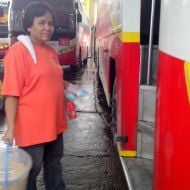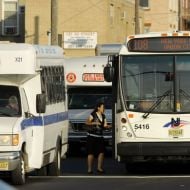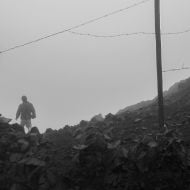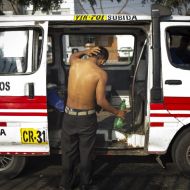Lima Roars to Life, Thanks, In Part, To Its Informal Settlements
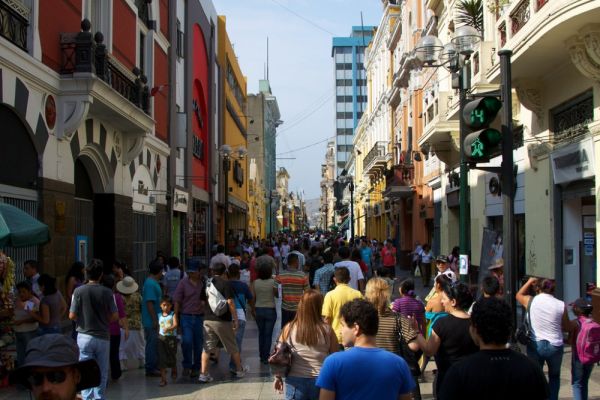
Lima’s increasingly busy streets are a testament to its surging economy and rising population. Photo by mckaysavage via Flickr Creative Commons.
Twenty years ago, Lima was a quiet city, its downtown a dodgy and dirty place, the streets sprinkled with weeks-old trash that gave the neighborhood a distinctive putrid smell. Certain roads were known as popular carjacking spots, best to be avoided.
I remember that as a child during those years, the city seemed isolated from the rest of the world. Shops and supermarkets were predominantly stocked with local products — not a Snickers in sight. Frequent blackouts caused by terrorist groups knocking down electrical transmission towers ground life to a periodic halt. People avoided using elevators for fear of getting stuck for hours.
But even then, you could sense that the city was shaking off its doldrums. Large numbers of people were moving from the provinces to the capital, their precarious settlements sprouting seemingly overnight in the surrounding hills.
Today, those settlements are still there, some of them woven nearly seamlessly into the city, informal shantytowns that have urbanized, gaining access to running water and electricity. Brightly colored private buses shuttle their inhabitants through the endless traffic jams that now trap Lima’s commuters for up to three hours daily in streets suddenly bustling with activity. American coffee shops have invaded district after district, and sleek glass buildings have sprouted, lending the imprimatur of modernity to the city’s skyline. A raucous mix of formal and informal is everywhere you look.
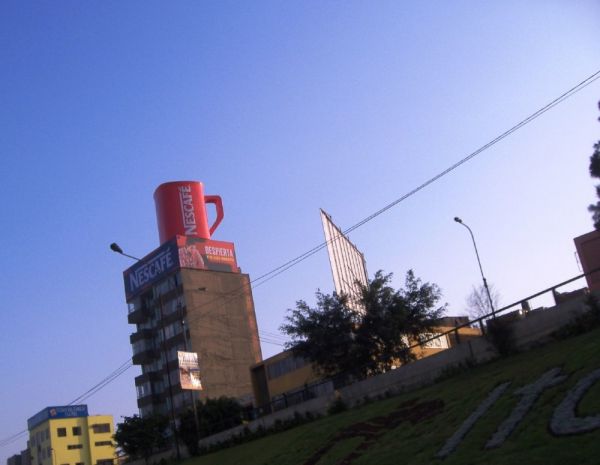
In a few decades, Lima has gone from a relatively isolated city to a major global hub. Photo by luigig via Flickr Creative Commons.
Home to an estimated 8.4 million people — up from just 973,000 in 1950 — Lima is the fourth largest city in the Americas and a metropolis in transition. On its outskirts, the massive influx of new inhabitants continues. In 1955 one-tenth of Lima’s population lived in the so-called pueblos jovenes (young towns). Back then the shantytowns consisted of improvised dwellings built upon loose sand, made of recycled materials, with esteras (matted reeds) as walls. By 1970 a quarter of the city’s population lived in such settlements, and it was not uncommon for vacant land to be transformed into a sprawling community over the course of a few short years.
More recently, many of these settlements, now referred to as asentamientos humanos (human settlements), have self-organized into vast urban regions with roads, schools, running water, electricity, and other permanent services and infrastructure. And many of these once illegal settlements are being incorporated into the formal city. Initiatives spearheaded by the World Bank, as well as the government’s Commission for the Formalization of Informal Property (COFOPRI), have distributed over 1.5 million property titles to urban households, giving settlers a measure of security. Today it is estimated that over 35 percent of the city’s population lives in one of these types of settlements.
Even more than that many work in informal businesses, given that the formal sector still holds significant barriers to entry, including onerous registration procedures and considerable fees. In 2007 the World Bank estimated that 60 percent of the country’s production was being carried out informally, and about 40 percent of its labor force was self-employed in informal micro-enterprises. Though the city’s informal workers don’t enjoy the protections and services that the state can provide, many of them prefer it to paying taxes and complying with labor and environmental regulations.
Indeed, the city of Lima as a whole seems to almost preternaturally resist too much formalization, no matter how modernized it becomes. For every new building that rises in the city’s financial center, a new asentamiento humano appears in the hills. Lawyers, doctors and government officials ride unlicensed buses and purchase pirated software. The system, despite its flaws, is one that most residents wouldn’t want to live without. This interplay between the formal and informal only makes it more vibrant.
The stories of how this juxtaposition plays out will be the focus of this blog as it chronicles Lima’s vast, and in many ways highly functional formal-informal dynamic. It will investigate the complicated relationship between the city’s formal and informal sectors, and peek into the day-to-day lives of those who live in what was once known as the City of Kings.
The past decade has been transformative for the Peruvian capital. Quality of life is improving for the average resident, population growth has steadied, and city officials have slowly begun to address the problems that have arisen from haphazard urban planning. In some respects, the Lima of my childhood is nearly unrecognizable. In other ways, however, life goes on much as it did in the days of the early pueblos jovenes.

